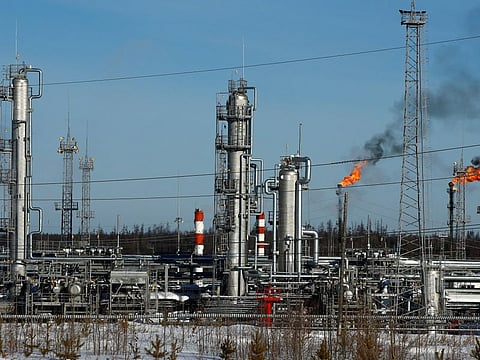Opec+ to raise oil output by 137,000 barrels a day in November
Saudi Arabia, Russia weigh balance between prices and market share

Dubai: Saudi Arabia, Russia, and six other Opec+ members will raise oil production by 137,000 barrels a day from November, marking the latest step in unwinding the group’s voluntary output cuts as it works to recover market share.
The alliance said in a statement after an online meeting that the decision reflected a steady global economic outlook and “healthy market fundamentals,” citing low oil inventories.
The increase will be drawn from the 1.65 million barrels a day of additional voluntary cuts announced in April 2023.
Delicate balancing act
The decision followed days of discussion between the group’s two largest producers.
Russia, which has consistently urged caution, supported a smaller rise to help defend prices, while Saudi Arabia, which carried the heaviest burden of earlier curbs, pushed for a larger addition to rebuild market share.
Oil traded near a four-month low on Friday, underscoring the challenge Opec+ faces as it returns more barrels to a market that is starting to show signs of excess supply.
Signs of softening demand
While prices have so far held up despite the gradual supply increases, market signals suggest momentum may be fading. Unsold cargoes from the Middle East are building up, and the futures curve now points to weaker short-term prices.
The International Energy Agency expects global inventories to rise sharply in the final quarter of 2025, warning that a record surplus could emerge by 2026 as demand cools and output across the Americas continues to surge.
Delegates said Opec+ weighed several options before settling on the 137,000-barrel increase. Some members had proposed larger adjustments, up to three times the agreed volume.
Limits to spare capacity
Sunday’s decision also highlights the limited production flexibility across the Opec+ alliance. Between May and September, members restored only about 60% of the 2.2 million barrels a day of supply they had planned to bring back, partly due to earlier overproduction corrections and the reality that some producers are already pumping close to capacity.
The move comes ahead of Saudi Crown Prince Mohammed bin Salman’s expected visit to Washington next month for talks with U.S. President Donald Trump, who has repeatedly called for lower oil prices.
Officials from both Saudi Arabia and Russia did not immediately comment on the decision, which underscores the group’s effort to balance market stability with its push to reclaim influence in a shifting global energy landscape.
- With inputs from Agencies
Sign up for the Daily Briefing
Get the latest news and updates straight to your inbox




